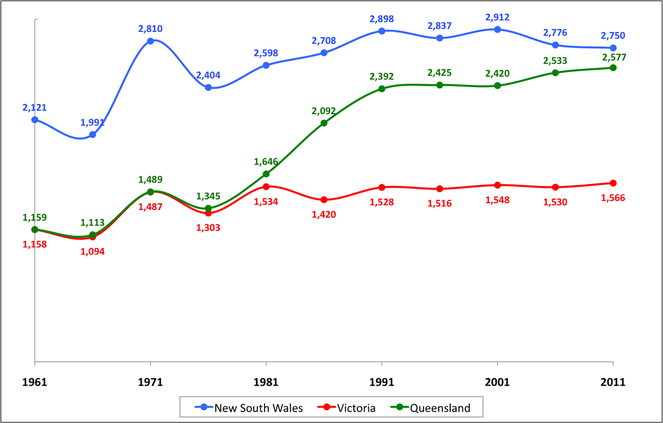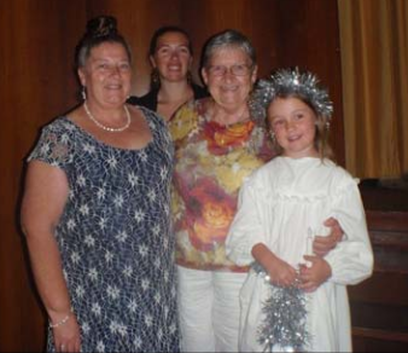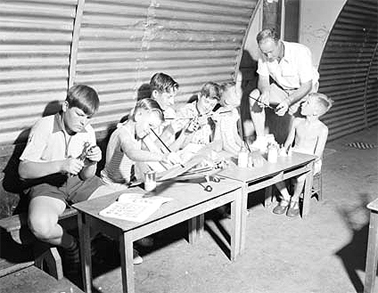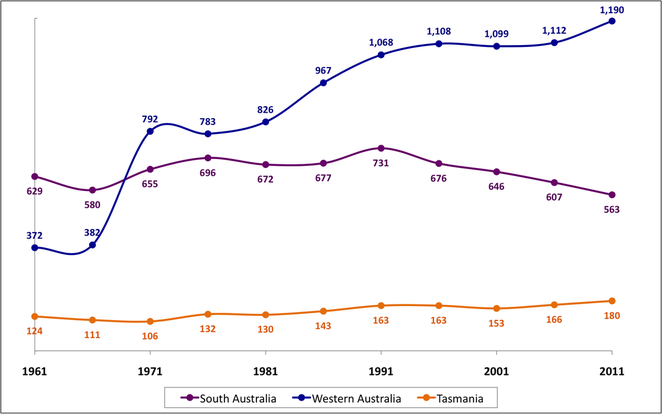post-war immigration
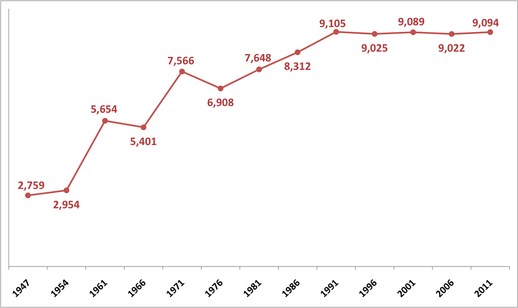 People registered as Danes based on ABS Census figures - 1947 to 2011
People registered as Danes based on ABS Census figures - 1947 to 2011
After World War II the Australian government introduced a new immigration policy, which was to significantly transform the demographics of the country. The so-called General Assisted Passage Scheme, initially aimed at British immigrants, was broadened after 1947 to include many other nationalities including Scandinavians. The scheme provided financial assistance and free English lessons (mandatory for non-English speakers) to immigrants to help them settle in Australia.
Prospective immigrants, having complied with health and character requirements, had to be in the age category of 18 to 45 for single males, 18 to 35 for single females, and under 50 for couples with or without children. Single people had to pay £10 as a landing requirement and couples £20. The breadwinner then had to sign an agreement to repay the financial assistance granted from the government should anyone in the family leave within 2 years of arrival.
Prospective immigrants, having complied with health and character requirements, had to be in the age category of 18 to 45 for single males, 18 to 35 for single females, and under 50 for couples with or without children. Single people had to pay £10 as a landing requirement and couples £20. The breadwinner then had to sign an agreement to repay the financial assistance granted from the government should anyone in the family leave within 2 years of arrival.
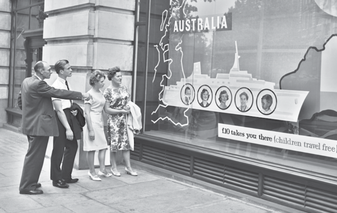
In 1966 a Special Passage Assistance Program (SPAP) was introduced to increase the influx of emigrants particularly from Europe, which was experiencing increasing prosperity and consequently less emigration.
Between 1944 and 1946, very few Danes emigrated to Australia – in fact there were more Danes departing than arriving. By the mid-1950s the numbers, however, were reversing and in the late 60s, Australia became an increasingly popular destination for those wanting to get away from the heavy Scandinavian taxations and unemployment. In the early 1970s large numbers of Scandinavians emigrated to Australia - in 1971, more than 7,500 Danes were registered in the Australian census compared to only 2,900 in 1954.
Between 1944 and 1946, very few Danes emigrated to Australia – in fact there were more Danes departing than arriving. By the mid-1950s the numbers, however, were reversing and in the late 60s, Australia became an increasingly popular destination for those wanting to get away from the heavy Scandinavian taxations and unemployment. In the early 1970s large numbers of Scandinavians emigrated to Australia - in 1971, more than 7,500 Danes were registered in the Australian census compared to only 2,900 in 1954.
Move from country to city
Unlike the two previous waves of immigration from Denmark, after the second world war the majority tended to be Danish migrants with skills needed not in farming but in the cities. A high proportion settled in cities in New South Wales, Victoria and Queensland.
The third wave of Danish immigrants renewed many communities around Australia such as the families in Poowong East and breathed new life into the Danish church and old Danish organisations as well as creating new ones (such as the Danish Australian Cultural Society, DACS).
The third wave of Danish immigrants renewed many communities around Australia such as the families in Poowong East and breathed new life into the Danish church and old Danish organisations as well as creating new ones (such as the Danish Australian Cultural Society, DACS).
Danish news in australia
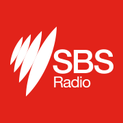
The renewed interest in Denmark also led to the publishing of the The Scandinavian Courier in March 1979 led by the Melbourne-based Danish printer, Svend Olsen. This was the first Scandinavian-focused newspaper in Australia in nearly 40 years since Norden. Sadly it was short-lived and after 95 issues the newspaper published its last in July 1983. A group in Sydney supported Zanne Mallett in publishing the monthly Scandinavian newspaper Scandinavian Herald, an English-language community newspaper, which ran until 1989.
SBS Radio started broadcasting a Danish programme in 1979, bringing news from Denmark in English first in Melbourne, and later in other states as well. Zanne Mallett was once again instrumental in bringing news from back home to resident Danes – joining SBS in 1979 and becoming Head of the group in 1998. Today, SBS continues to broadcast a weekly Danish radio programme produced and hosted by Geelong-based Mik Aidt.
SBS Radio started broadcasting a Danish programme in 1979, bringing news from Denmark in English first in Melbourne, and later in other states as well. Zanne Mallett was once again instrumental in bringing news from back home to resident Danes – joining SBS in 1979 and becoming Head of the group in 1998. Today, SBS continues to broadcast a weekly Danish radio programme produced and hosted by Geelong-based Mik Aidt.
a resurgence of Danish immigrants
The vast of majority of Danes settling in Australia after WWII were drawn to Queensland, Victoria and New South Wales.
In 1954, just over 800 Danes were registered as living in Queensland – in the 2011 census, this number was over 2,500. The Danish club Heimdal in Brisbane (which was founded in 1872 making it the oldest Scandinavian organisation in Australia), was revived after WWII with many new members joining (newly arrived immigrants as well as descendants of Danes).
Aksel Schack Steenberg was born in Copenhagen in 1896, came to Australia in 1930 and enlisted in 1942 serving in the Australian Army. He had joined Heimdahl shortly after coming to Australia and was elected president in 1952. He was considered a key driving force behind the club and its continued expansion. He was honoured by the Danish King in April 1960 and presented with the Order of “Ridder of Dannebrog” by the then Danish Consul General in Sydney, F. Henning Hergel.
Frank Nissen-Wiis served as Danish honorary consul in Queensland between 1981 and 1993 and was succeeded by Ole Andersen, who had migrated to Australia in 1956 with his parents and seven siblings.
Aksel Schack Steenberg was born in Copenhagen in 1896, came to Australia in 1930 and enlisted in 1942 serving in the Australian Army. He had joined Heimdahl shortly after coming to Australia and was elected president in 1952. He was considered a key driving force behind the club and its continued expansion. He was honoured by the Danish King in April 1960 and presented with the Order of “Ridder of Dannebrog” by the then Danish Consul General in Sydney, F. Henning Hergel.
Frank Nissen-Wiis served as Danish honorary consul in Queensland between 1981 and 1993 and was succeeded by Ole Andersen, who had migrated to Australia in 1956 with his parents and seven siblings.
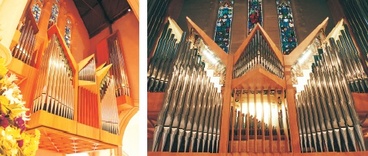 The Jubilee pipe organ, Cathedral of St Stephen
The Jubilee pipe organ, Cathedral of St Stephen
In Victoria, the influx of Danes has been relatively consistent from the early 1960s to 2011 with between about 1100 and 1500 Danes registered in each census.
Knud Smenge (1937-) arrived in Australia in 1979 after working 21 years for two Danish organ-building companies, Marcussen & Son and Bruno Christensen & Son, both of which were renowned internationally. His first job in Australia was as head voicer and tonal director with Australian organ-builder George Fincham & Sons but after two years he established his own firm. He became a highly esteemed organ-builder in Australia and a leader in his field.
He rebuilt and restored organs and built over 40 new ones for the Swedish Church in Toorak, the Newington College in Stanmore NSW, St. George’s Anglican Cathedral in Perth, The Cathedral of St Stephen in Brisbane, University of Tasmania, the University of Hong Kong and many more.
Knud Smenge (1937-) arrived in Australia in 1979 after working 21 years for two Danish organ-building companies, Marcussen & Son and Bruno Christensen & Son, both of which were renowned internationally. His first job in Australia was as head voicer and tonal director with Australian organ-builder George Fincham & Sons but after two years he established his own firm. He became a highly esteemed organ-builder in Australia and a leader in his field.
He rebuilt and restored organs and built over 40 new ones for the Swedish Church in Toorak, the Newington College in Stanmore NSW, St. George’s Anglican Cathedral in Perth, The Cathedral of St Stephen in Brisbane, University of Tasmania, the University of Hong Kong and many more.
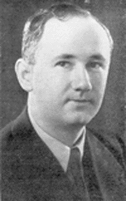 Max Enkhardt
Max Enkhardt
Max Herbert Enkhardt (1910-1979) was born near the border between Denmark and Germany. He was raised by foster parents and grew up on the tiny island Agersø near the island of Zealand (Sjælland). He emigrated to Melbourne in 1928 to join his German-born mother. He worked as a sailor, art dealer, published the Orpheus Review and also gave lectures on art and music. In 1969 he shot dead his severely disabled wife of 35 years. The year before Anna Enkhardt had been in a car accident, which had greatly affected her both physically and psychologically. The couple was behind in rent and Max had started drinking. Max pleaded not guilty citing the death as a mercy killing but was found guilty of murder and sentenced to 25 years’ imprisonment.
Whilst in prison, he took up painting and led an exemplary life. In 1974 he won first prize in an art competition and also won the Alfred Brook memorial prize for his entry, a painting titled Castle in Old Denmark. After serving almost 9 years, Max was released in August 1978. Sadly, in September 1979 he was hit by a car and died soon afterwards.
Whilst in prison, he took up painting and led an exemplary life. In 1974 he won first prize in an art competition and also won the Alfred Brook memorial prize for his entry, a painting titled Castle in Old Denmark. After serving almost 9 years, Max was released in August 1978. Sadly, in September 1979 he was hit by a car and died soon afterwards.
danish descendants making a mark
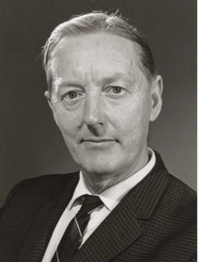 Wilbur Norman (Chris) Christiansen
Wilbur Norman (Chris) Christiansen
New South Wales has continued to be the most popular state to settle in for Danes throughout most of the 20th century through to today. Many, both Danish-born and descendants of Danes, have made a significant contribution to the Australian society across a wide range of professions or cultural institutions bringing Danes far away from home together. Many have been referenced throughout the website including Jørn Utzon, Peter Madvig, the Knox family and many more.
Another descendant of early Danish settlers, Wilbur Norman Christiansen (1913-2007) was a pioneer radio-astronomer. His grandfather, Jens Christiansen came from Denmark when he was just a teenager, and jumped ship to work in the goldfields.
Wilbur, known as Chris, was born in Melbourne but later moved to NSW. He invented a telescope to map the sun, a new science at the time - an array at Badgerys Creek in NSW is named after him, the Chris Cross Telescope. He was a senior principal research officer in the Commonwealth Scientific and Industrial Research Organisation (CSIRO) and also taught engineering at the University of Sydney. He died in 2007 aged 93.
Another descendant of early Danish settlers, Wilbur Norman Christiansen (1913-2007) was a pioneer radio-astronomer. His grandfather, Jens Christiansen came from Denmark when he was just a teenager, and jumped ship to work in the goldfields.
Wilbur, known as Chris, was born in Melbourne but later moved to NSW. He invented a telescope to map the sun, a new science at the time - an array at Badgerys Creek in NSW is named after him, the Chris Cross Telescope. He was a senior principal research officer in the Commonwealth Scientific and Industrial Research Organisation (CSIRO) and also taught engineering at the University of Sydney. He died in 2007 aged 93.
in search of a better life: danish families emigrating to australia
Whilst immigration of Danes to Tasmania and South Australia has remained fairly static from the 1950s to today, Western Australia has seen numbers doubling from just over 600 around 1960 to nearly 1200 in 2011.
Examples of Danes who settled in Perth include the families of Axel and Lissy Bolvig who arrived in Fremantle on board the Orcades via London in 1957.
|
A few years later, friends of theirs, Arnold and Edith Christensen, emigrated also. Arnold came from Jutland and Edith from Fyn and after having lived in both Sweden and Denmark they arrived in Melbourne in 1960 with their three children. After a month in the reception camp at Bonegilla in North East Victoria, they spent five months in Sydney before moving to Perth. Arnold got jobs as a metalworker and Lissy, through her association with the Scandinavian Club in Perth, started producing the Danish segments for the radio programme “Scandinavian Half Hour”.
The Christensen’s continue to be a part of the Scandinavian Association of Western Australia today – in 2015, four generations attended the Lucia parade event with Edith, her daughter Ilse, granddaughter Katy and great-granddaughter Bianca. |
|
In 1956 the ship Castel Felice left Germany with 300 Danes on board destined for Australia. On board was a group of 8, the Skaarup family, Harry, a bricklayer, and his wife Edith, their daughters Vinnie and Mitzi and son Dennis (who at the time were 19, 15 and 13 years of age), as well as Vinnie's boyfriend, Leif, and two of his friends Vagn and Svend, both of whom had worked for the East Asiatic Company.
After arriving in Melbourne they were sent north to the Villawood migrant centre in NSW. For the next six months they lived at the barracks, were given food, pocket money and English lessons. Harry and Vinnie then started working in a bottle factory and soon |
afterwards, Vinnie got a job working for the two Dutch tailors in Sydney. Harry found work using his skills as a bricklayer and was able to buy plots of land where he built houses before selling them off. The family thrived and all three children married and had children.
Apart from Vinnie (who moved back to Denmark with her family but returned to Australia after her husband passed away) everyone settled in Australia where several descendants are still living (Source: Dragør local archives).
Apart from Vinnie (who moved back to Denmark with her family but returned to Australia after her husband passed away) everyone settled in Australia where several descendants are still living (Source: Dragør local archives).
|
Back to top
|
